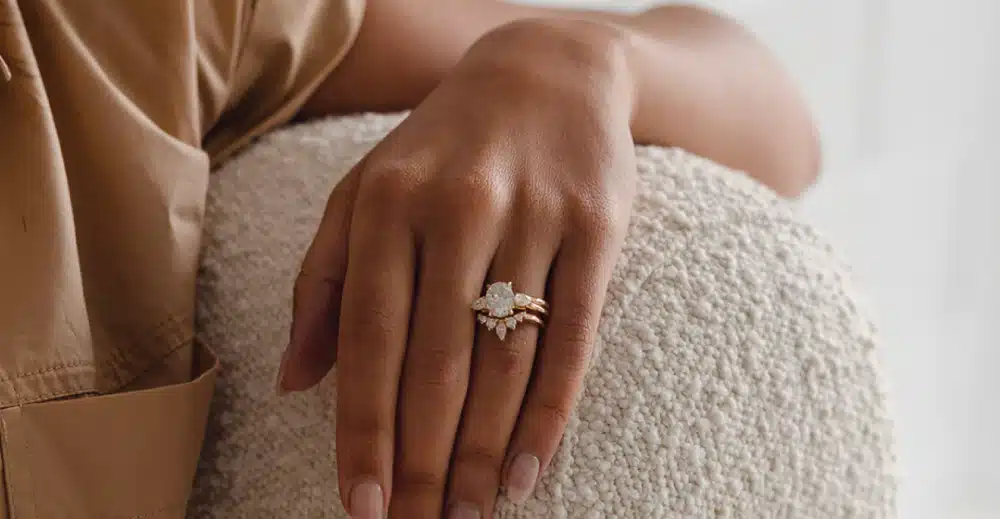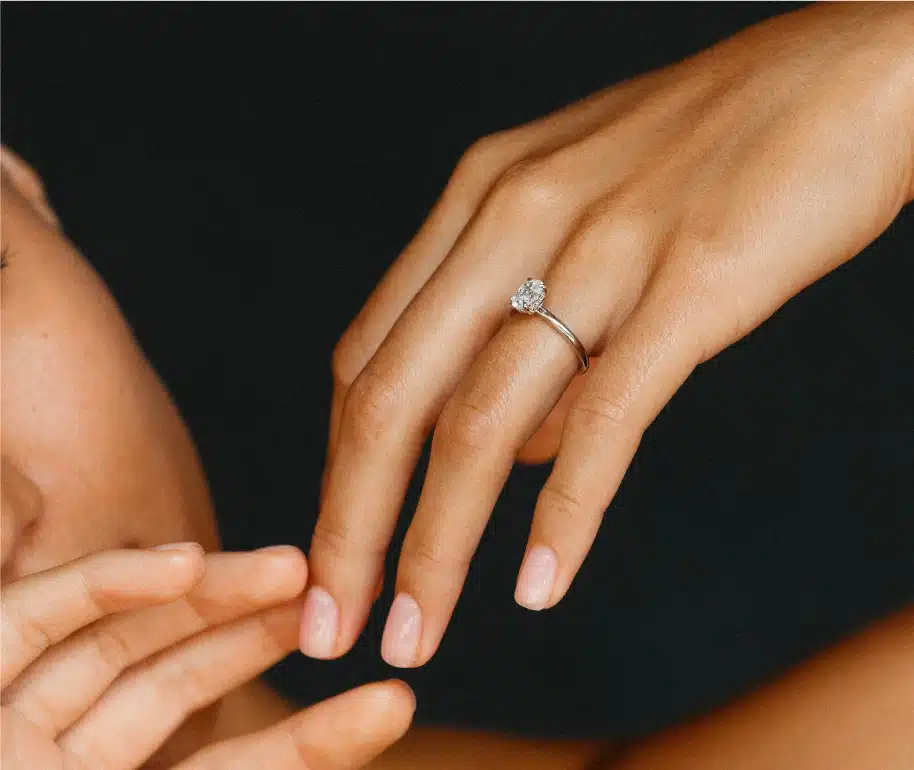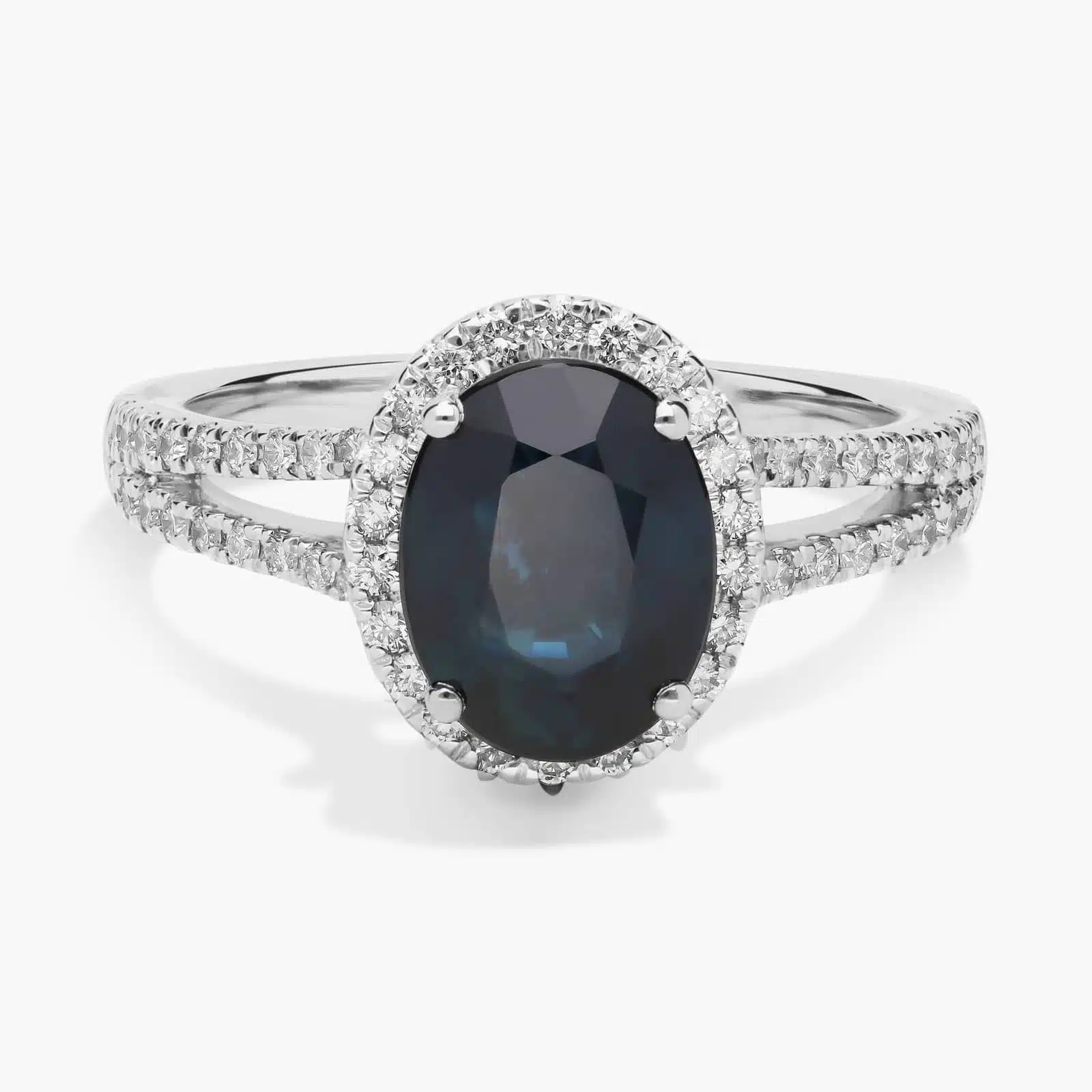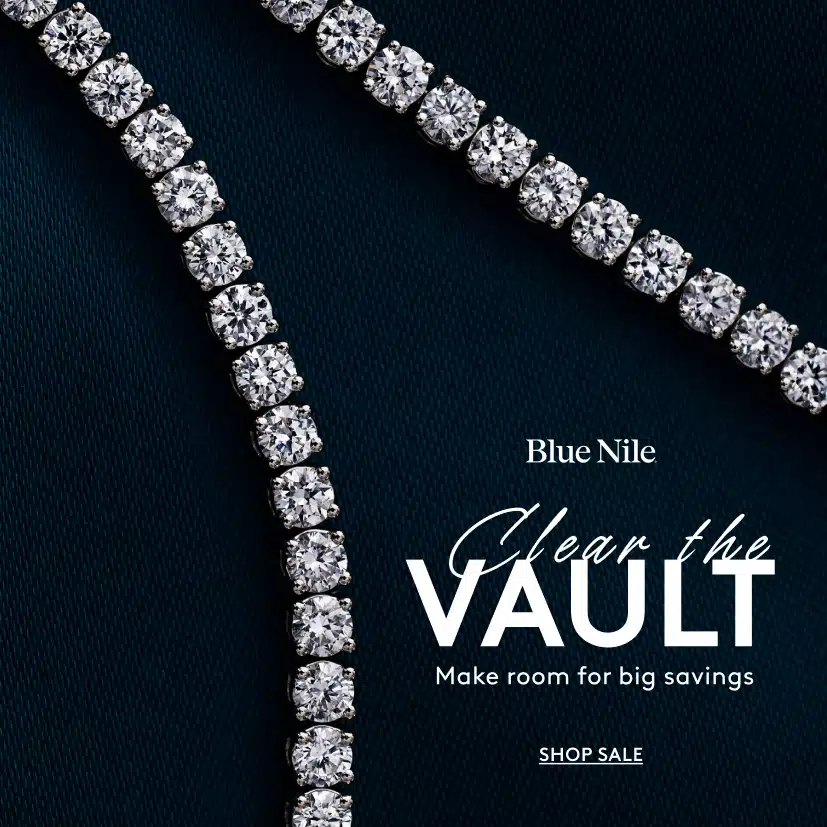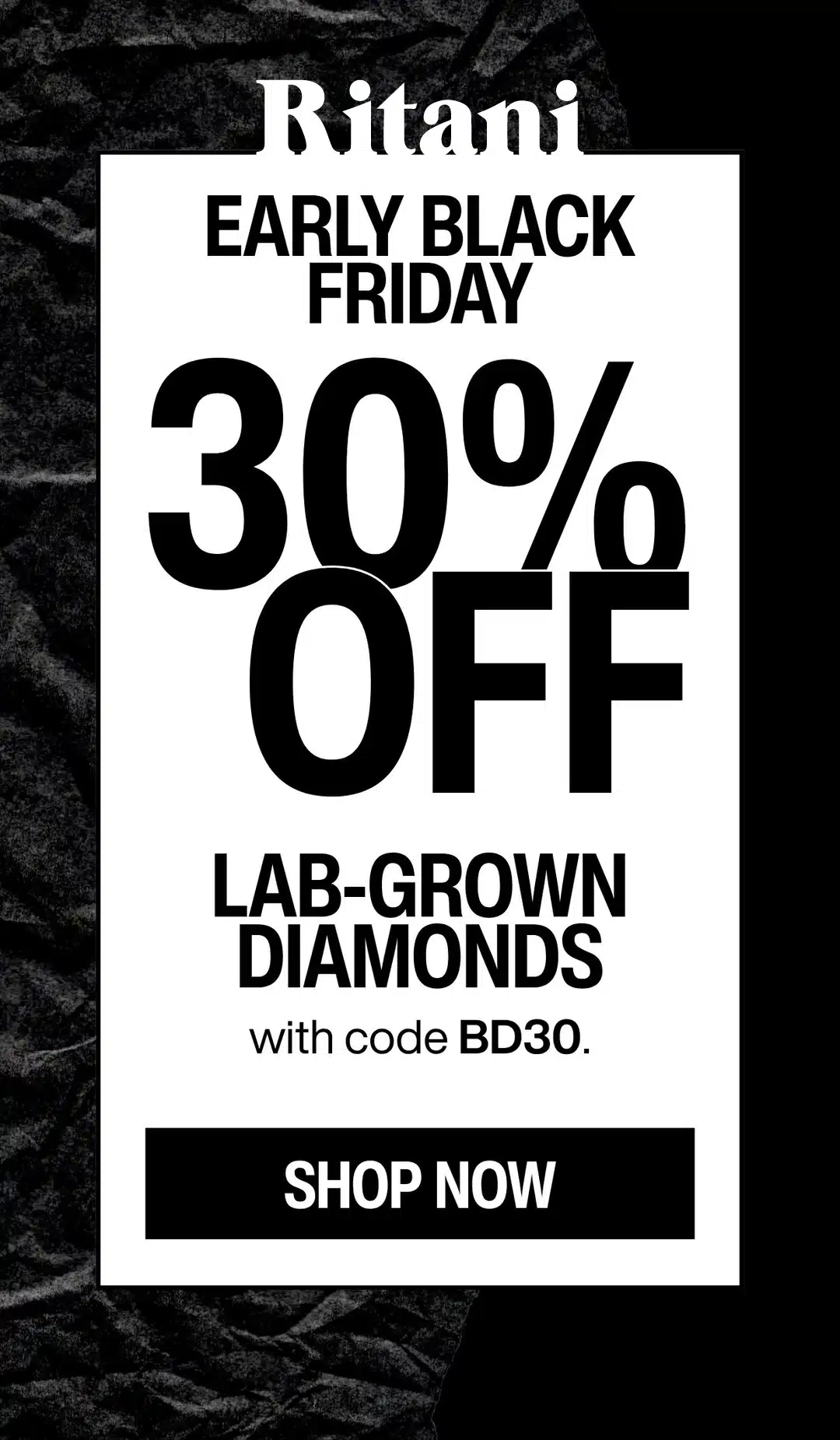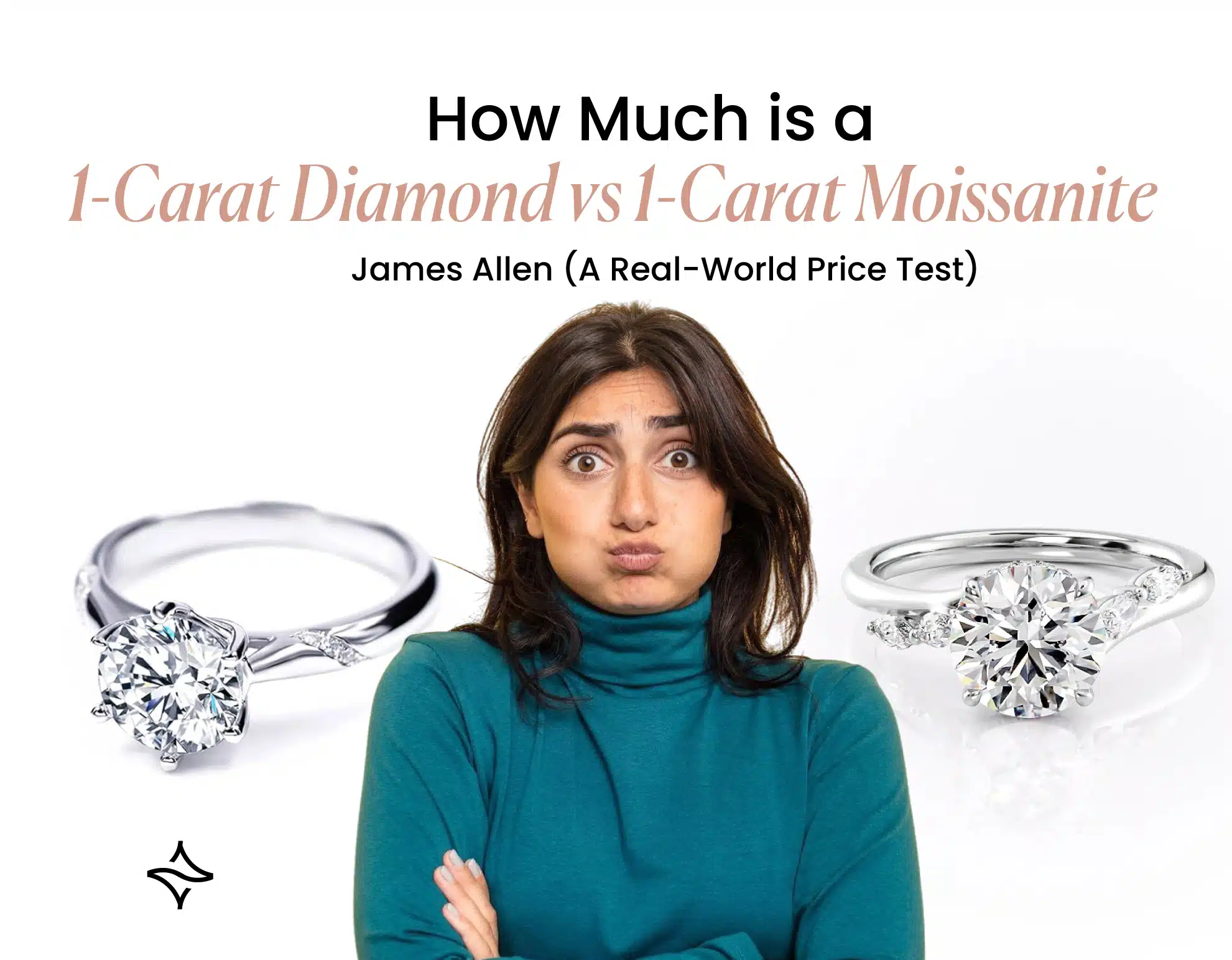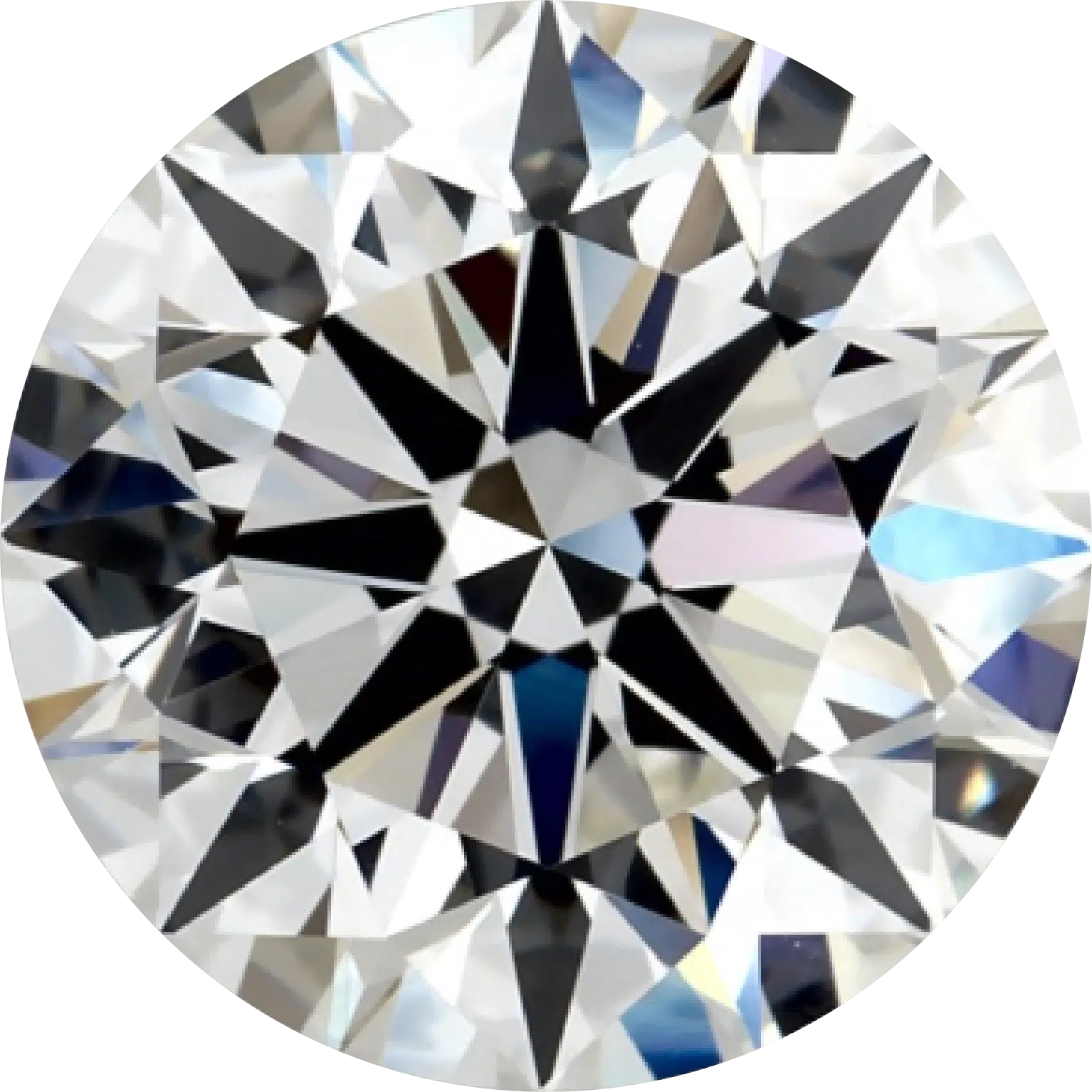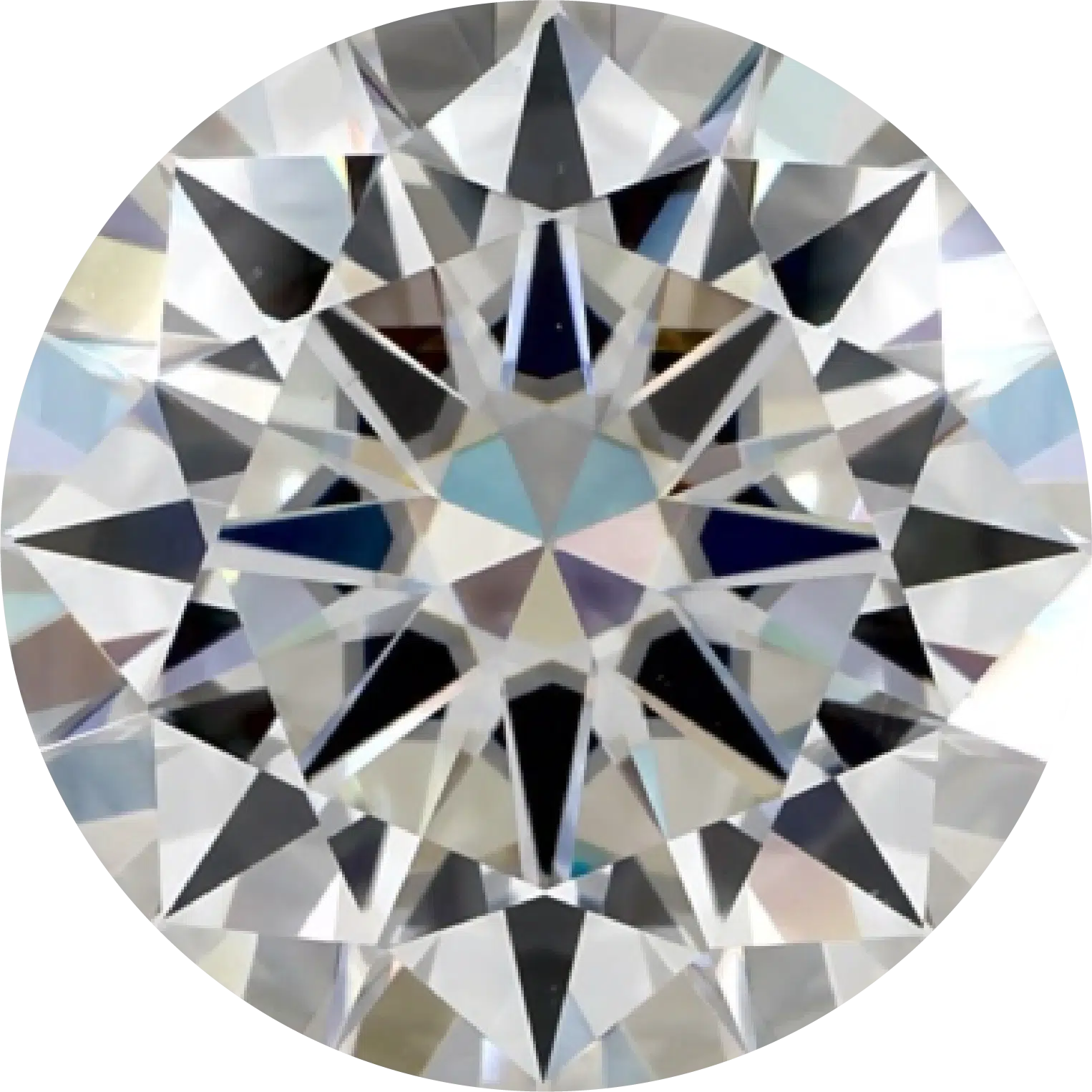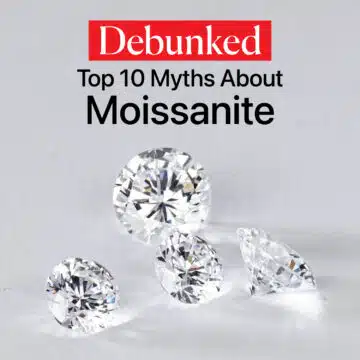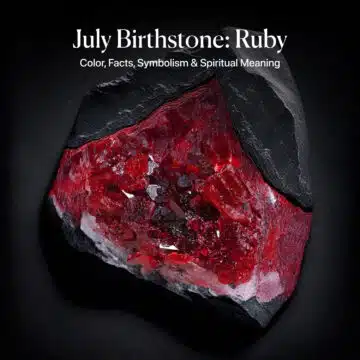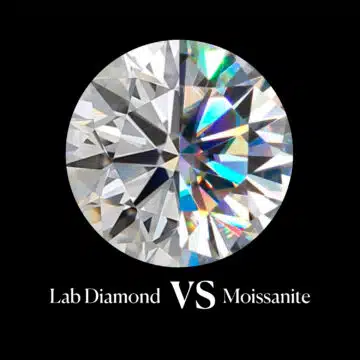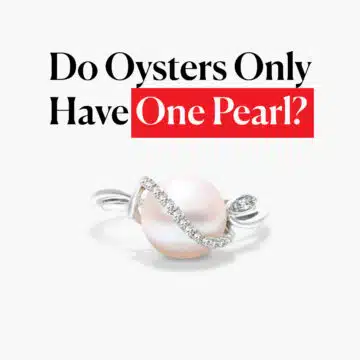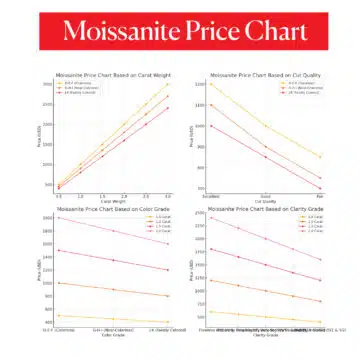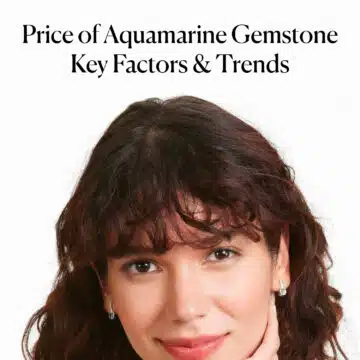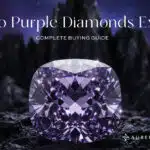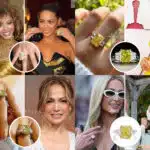The price of a high-quality 1-carat round stone varies dramatically: a natural diamond costs around $3,400+, a lab-grown diamond (which is chemically identical) costs $760+, and a moissanite costs about $400+. This price difference is driven by rarity and creation process, not visual beauty.
You’re trying to buy a beautiful 1-carat stone for your ring, but the prices are all over the map. You see three stones that look the same size online, but one is ten times the price of another. It’s confusing, and it makes you ask the most important question: ‘What is the catch? Why are these prices so different, and what am I really getting for my money?’
As your friend in the business, we’re going to find the answer right now with a real-world experiment. We are going to go shopping at James Allen and look at the actual listings and prices for these three incredible options.
I won’t just tell you the prices; I’ll show you the stones and explain exactly what your money buys in each category, so you can make a smart, confident decision.
- The Heritage Choice: The 1-Carat GIA Natural Diamond
- The Modern Marvel: The 1-Carat IGI Lab-Grown Diamond
- The Brilliant Value: The 1-Carat Moissanite
- Diamond vs. Lab Diamond vs. Moissanite: What Your Money Really Buys
- It's Not About Price, It's About Your Priorities
- Your Top 1-Carat Questions, Answered
- A Stone for Every Story, A Price for Every Budget
Think You’re A Moissanite Pro?
Think you’re a Moissanite Pro and can tell the difference? Choose the gemstone that you like better. Is it the one for $1,180 or the one for $39,000? Both are 2.48 carats.
The Heritage Choice: The 1-Carat GIA Natural Diamond
Alright, let’s start our shopping trip with the timeless classic, the undisputed king of the jewelry world: the 1-carat natural diamond.
To make this a fair, real-world test, we are not going to look at just any diamond. We’re going to hunt for a stone in what I, and most other jewelers, call the “sweet spot” of value—the perfect intersection of beauty and price that savvy buyers aim for.
Using James Allen’s powerful search filters, I’ve created a curated list of diamonds that meet these strict criteria:
- Certification: GIA (the non-negotiable gold standard for natural stones)
- Carat Weight: Exactly 1.00 Carat
- Cut Grade: Excellent (our #1 priority for sparkle)
- Color Grade: G (the sweet spot for a white look at a great price)
- Clarity Grade: VS1 and VS2 (the “safe zone” for an eye-clean diamond)
Here is a snapshot of the results of that exact search.
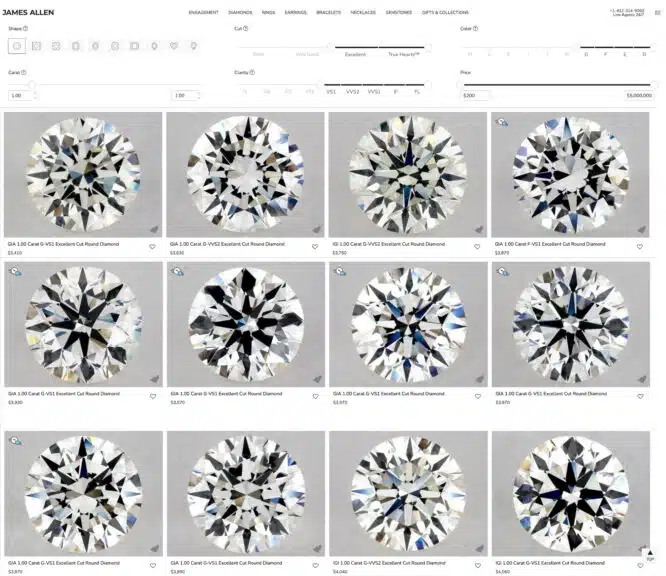
The Analysis: Decoding the Prices
The first thing you’ll probably notice is the prices. In this snapshot of high-quality diamonds, the prices range from a low of $3,410 to a high of $4,060. This brings up a fantastic question: why isn’t every “1.00 Carat, G-Color, Excellent Cut” diamond the same price? The answer lies in subtle differences that create value.
- Clarity Makes a Difference: Look at the top row. The GIA 1.00 Carat G-VS1 on the far left costs $3,410. Right next to it is a G-VVS2 for $3,630. That extra $220 is what you pay for a higher clarity grade. From a value perspective, if both are eye-clean, the VS1 is the smarter buy.
- Color Makes a Bigger Difference: Now look at the fourth diamond in the top row: a GIA 1.00 Carat F-VS1 for $3,870. The only difference between this stone and the one on the far left is that it’s one color grade higher (F is more colorless than G). As you can see, that single, often imperceptible, jump in color grade costs an extra $460.
- The Sweet Spot in Action: The most common combination you’ll see is the G-VS1, with prices from $3,410 to $3,990. This is the market telling you that this specific combination is where the heart of real value lies.
What Your Money Really Buys
When you choose to spend in this ~$3,700 price range for a 1-carat natural diamond, you need to understand what you are actually paying for. You’re not just buying a beautiful stone; you are buying a story.
You are paying for rarity. You are buying a small piece of the Earth’s deep history, a crystal that was formed under unimaginable heat and pressure billions of years ago, long before the dinosaurs.
Its price reflects that incredible, inefficient, and miraculous journey from a mine deep in the earth, through a long and complex supply chain, to finally rest on your finger.
When you choose a natural diamond, you are choosing the ultimate classic, the stone that has been the symbol of love for generations. For a deep dive into what makes this timeless shape so special, our full Round Brilliant Cut Diamond Guide has everything you need to know.
James Allen is a top leader in online diamond sales, offering cutting-edge imaging technology that lets you inspect diamonds as if you were using a jeweler's loupe. With the largest exclusive selection of loose diamonds available online and excellent pricing, they also boast one of the finest collections of lab-created diamonds on the market. They currently run a 25% discount on selected lab-grown diamonds!
WHAT WE LOVE ABOUT THEM:
- 30-day no-questions-asked return policy, with a prepaid shipping label provided by James Allen.
- Lifetime warranty on all purchases.
- Free international shipping.
- Complimentary prong tightening, repolishing, rhodium plating, and cleaning every six months.
- Insurance appraisals included with purchases.
- One free resizing within 60 days of purchase.
- Free ring inscriptions available.
- Best-in-class high-quality imagery for every diamond in stock.
- 24/7 customer support.
- Premium, best-in-class packaging.
The Modern Marvel: The 1-Carat IGI Lab-Grown Diamond
Alright, I want you to take a deep breath. We’ve just established the benchmark for a beautiful, high-quality 1-carat natural diamond at around $3,700. Now, I’m going to show you what happens when we click a single button on James Allen’s site: the one that switches the search from “Natural” to “Lab-Grown.”
Look closely at this next image.
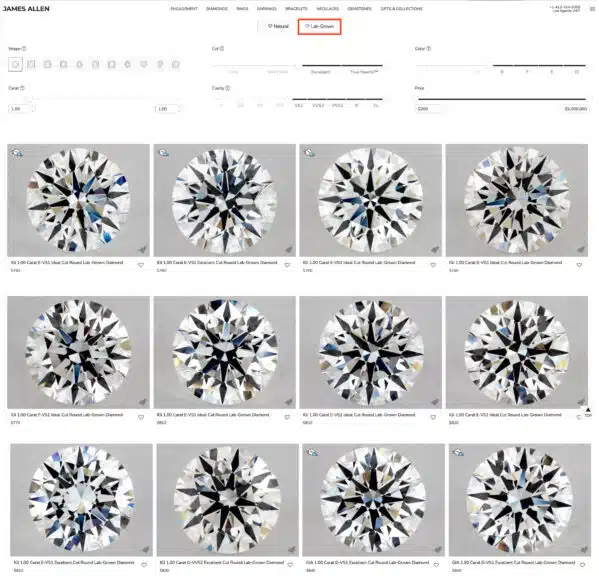
The Analysis: A New World of Quality
The first and most important thing I need you to understand is this: every single stone you are looking at is a real diamond. It is chemically, physically, and optically identical to the natural diamonds in the previous section.
It has the same hardness, the same brilliance, and the same timeless beauty. The only difference is its origin story—one was born in a lab, the other was born in the earth.
Now, look at the details on the screen, because this is where it gets incredibly exciting for a value hunter like me.
- The Certificate: You’ll immediately notice one big change. The letters on most of the certificates have switched from “GIA” to “IGI” (International Gemological Institute). As we’ve established in our deep-dive on IGI vs. GIA, IGI is the new global gold standard for lab-grown diamond certification. This is the report you should look for and trust for a lab diamond.
- The Quality Grades: Look at the color grades! Where we were hunting for G-color in the natural diamonds, this page is filled with D, E, and F color stones. These are the “Colorless” grades, the absolute pinnacle of the diamond color scale. You are seeing a higher standard of quality becoming the norm.
The Price: The Jaw-Dropping Difference
Now, look at the prices. Let this sink in. While the GIA natural diamonds were clustering between $3,410 and $4,060, the prices for these spectacular, IGI-certified lab-grown diamonds are almost all between $760 and $840.
That’s not a typo. Let’s take a direct, stunning comparison from the screenshot:
- At the bottom right, you see a GIA 1.00 Carat D-Color, VS1 Lab-Grown Diamond for just $840.
- A GIA natural diamond with those same top-tier specs would likely cost upwards of $7,000 to $8,000.
You are looking at a price difference of 80-90%. This is, without question, the most powerful example of technological disruption in the entire luxury world.
DIAMOND ON SALE!!
⏰ Tick-Tock! The Best Diamond Deals at James Allen Are Disappearing Fast!
My Mehedi Explanation
This is what gets me so excited as a professional. When you choose to buy a 1-carat lab-grown diamond, you are making a conscious decision to shift what you are paying for.
You are no longer paying for rarity, history, and a long, inefficient supply chain. Instead, you are paying for pure, unadulterated quality.
The lab process is so advanced and controlled that top-tier quality—like D/E/F color and VS+ clarity—has become the accessible standard, not the unaffordable exception. You are getting a chemically perfect diamond with a better color grade for a fraction of the price.
The “catch” is simply that its origin is a marvel of modern technology, not a miracle of ancient geology. Understanding exactly how this incredible technology works is key to feeling confident in your purchase, a topic we explore in our complete guide to the Types of Lab-Grown Diamonds.
This isn’t a compromise; it’s a strategic choice to get the most beautiful diamond science can produce for an honest, technology-driven price.
The Brilliant Value: The 1-Carat Moissanite
Alright, we’ve looked at the billion-year-old natural diamond and its identical, lab-grown twin. Now, let’s explore our third and final contender, the one that represents the ultimate sweet spot of brilliance and pure, unadulterated value: the 1-carat moissanite.
First, let me be crystal clear: moissanite is not a diamond. It’s a completely different gemstone, a brilliant mineral called silicon carbide that was first discovered in a meteor crater.
To access it on a retailer’s site, you often have to switch from the “Diamonds” tab to the “Gemstones” tab, as I’ve shown in the screenshot below from James Allen.
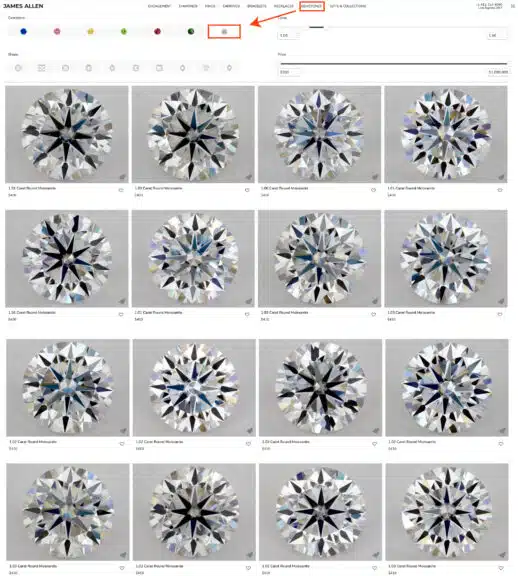
The Analysis: A Different Kind of Perfection
When you start browsing for moissanite, you’ll immediately notice that the search process is much simpler than it is for a diamond. You are not worrying about complex GIA and IGI reports or trying to find a “sweet spot” for color and clarity.
Why? Because the technology for creating moissanite has been so perfected that stunning, top-tier quality is the industry standard.
- Color & Clarity: You can assume that any moissanite from a top-tier retailer like James Allen will be of exceptional quality, falling within the premium D-E-F “Colorless” range and VVS “Very, Very Slightly Included” clarity grade.
These top-tier specs are not an expensive upgrade; they are the baseline. For a full breakdown of its quality standards, our guide to the 4Cs of Moissanite is a must-read. - The Sparkle: A moissanite’s calling card is its fire. It has a higher refractive index than a diamond, which means it throws off more vibrant and intense rainbow-colored flashes of light. It’s a different, more fiery kind of beauty that many people find even more visually exciting.
The Price: The Unbeatable Champion of Value
Now, let’s talk about the prices in the screenshot. They are not a typo. You are looking at a full screen of beautiful, 1-carat, top-quality round moissanite stones, and they are all priced with incredible consistency between $400 and $410.
Let’s put that in the context of our other two contenders:
- The 1-Carat Natural Diamond was ~$3,700.
- The 1-Carat Lab Diamond was ~$800.
- The 1-Carat Moissanite is ~$400.
You are looking at a gemstone that is even more affordable than a lab diamond, and approximately 90% less expensive than a natural diamond of the same size.
My Mehedi Explanation
This is what makes the moissanite the ultimate champion of value. It’s not a diamond, and it’s not trying to be. It is a completely different gem with its own unique and even more fiery sparkle.
James Allen is widely known for their diamond expertise, but they also offer a select range of certified moissanite stones for shoppers seeking brilliance without the high price tag. Each moissanite comes with authentic certification, and many are GIA-certified, ensuring transparency, quality, and peace of mind. With stunning sparkle, ethical sourcing, and James Allen’s signature high-resolution imaging, moissanite is a smart, stunning alternative for modern couples.
WHAT WE LOVE ABOUT IT:
- Certified moissanite, including options with GIA certification—a rare find in the industry.
- High-quality stones with exceptional brilliance and clarity.
- More affordable than diamonds, with significant savings on engagement rings and fine jewelry.
- Access to James Allen’s 360° HD imaging, so you can inspect every facet before you buy.
- Backed by James Allen’s 30-day return policy, lifetime warranty, and free resizing.
- Same excellent service, packaging, and support as their diamond collections.
WHAT TO KNOW:
- Smaller moissanite selection compared to diamonds or lab-grown options.
- Not always featured prominently on their website—may need to request or inquire directly.
- Best suited for buyers who value certification and visual transparency over brand variety.
Its remarkably fair and consistent price reflects a clean, modern, and highly efficient lab-grown process that doesn’t involve the complex and expensive carbon-copying of a lab diamond.
When you choose a 1-carat moissanite, you are not paying for history or rarity. You are paying for pure, brilliant performance at the fairest possible price.
The reason why this value is so incredible is a fascinating story in itself, and for a full breakdown of the economics, our complete guide on Why is Moissanite So Cheap? is an absolute must-read. It’s the ultimate choice for the buyer whose #1 priority is getting the biggest, most brilliant stone for their money, without compromise.
Diamond vs. Lab Diamond vs. Moissanite: What Your Money Really Buys
Alright, we’ve just gone on a real-world shopping trip and seen the contenders in their natural habitats. Now, it’s time for the “aha!” moment. To make the differences crystal clear, I’ve taken all of that information and boiled it down into one powerful, scannable table.
This is the ultimate cheat sheet, the head-to-head breakdown that shows you exactly what your money is buying in each category.
| Feature | 1-Carat Natural Diamond | 1-Carat Lab Diamond | 1-Carat Moissanite |
| Average Price | ~$3,700 | ~$800 | ~$400 |
| The Stone | Natural Carbon | Lab-Grown Carbon | Silicon Carbide |
| Durability | 10/10 (The Hardest) | 10/10 (Identical to Natural) | 9.25/10 (Extremely Durable) |
| Sparkle Style | Classic Brilliance & Fire | Classic Brilliance & Fire | Intense “Rainbow” Fire |
| Resale Value | Yes (Holds a % of value) | Very Little to None | No |
| Certification | GIA | IGI | James Allen Certified / GRA |
My Mehedi Breakdown: An Expert’s Look at the Data
That table gives you the hard numbers, but my job is to give you the story behind them. Let’s break this down, line by line.
1. The Price (The Unignorable 90% Drop)
Let’s just state the obvious: the price difference is staggering. For the price of one 1-carat natural diamond, you can get approximately four lab-grown diamonds or nine moissanites.
This isn’t a small variance; it’s a complete disruption. This is the power of choosing a modern, lab-created stone over a traditionally mined one.
2. The Stone (Carbon vs. Silicon Carbide)
This is the scientific heart of the matter. The Natural Diamond and the Lab Diamond are both pure carbon. They are chemically, physically, and optically identical twins; one was simply born in a lab. The Moissanite is a different superstar altogether—a gem made of silicon carbide.
This is why it’s not a “fake diamond”; it’s a completely different and unique gemstone, just as a sapphire is different from a topaz.
3. Durability (The “Forever” Factor)
This is a critical point for an engagement ring you’ll wear every day. Both the Natural and Lab Diamonds are a perfect 10 on the Mohs scale of hardness—the hardest known mineral on earth.
The Moissanite is an incredible 9.25, making it the second-hardest gemstone commonly used in jewelry and harder than sapphire. The bottom line: All three of these are exceptionally durable, “forever” stones that are perfectly suited for a lifetime of daily wear.
4. Sparkle Style (Classic Fire vs. Rainbow Fire)
Both the Natural and Lab Diamonds have that classic, beloved sparkle—a beautiful, balanced mix of white light (brilliance) and rainbow flashes (fire). A Moissanite, because of its higher refractive index, takes those rainbow flashes and turns the volume way up.
It has a more intense, fiery, “disco-ball” effect. There is no “better” here, only your personal preference: do you love a classic fire or an explosive rainbow fire?
James Allen: Our 5-Star Choice for Price and Selection
Check our comprehensive James Allen Review to learn more about their pricing and commitment.
5. Resale Value (The Long-Term vs. The Now)
When you buy a Natural Diamond, a portion of its high price is for its historical ability to hold a percentage of its value. It’s a tangible asset. Both Lab Diamonds and Moissanite should not be considered financial investments and have little to no resale value.
Their value is “cashed in” on day one, where you save a massive 80-90% upfront. You’re choosing between a long-term store of value versus incredible immediate value.
6. Certification (Your Guarantee of Quality)
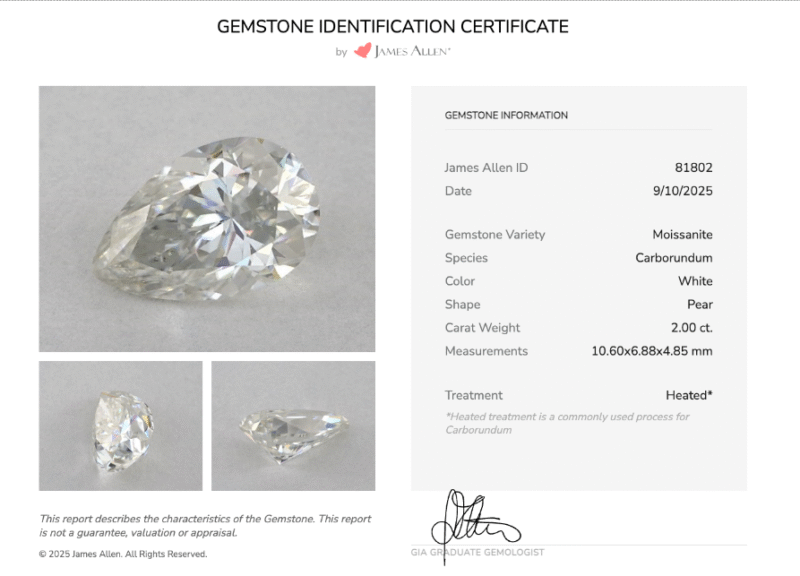
This is the expert’s detail. For a Natural Diamond, you should demand a GIA certificate. For a Lab Diamond, as we’ve discussed, IGI is the new gold standard. For Moissanite, it’s a bit different. While many come with a report from labs like GRA, a top-tier retailer like James Allen takes it a step further.
They provide their own Gemstone Identification Certificate, which has been reviewed and signed by their in-house GIA-trained gemologists. This is a huge confidence booster that brings a diamond-world level of authority to your moissanite purchase.
It’s Not About Price, It’s About Your Priorities
We’ve just done a deep dive into the real-world prices and specs of these three incredible stones. As you can see, the choice isn’t really about which one is “best”—it’s about which one is best for you. This is a decision that comes down to your personal values, your budget, and what you want the story of your ring to be.
To make it simple, I want you to ask yourself which of these three buyer profiles sounds the most like you.
Choose the Natural Diamond if:
- You are a romantic traditionalist at heart.
- You deeply value the history, the rarity, and the billion-year-old story of a gemstone that was created by the earth.
- You see your engagement ring not just as a piece of jewelry, but as a potential heirloom and a long-term store of value.
- You are comfortable with the significant budget required to own a piece of this natural legacy.
Choose the Lab-Grown Diamond if:
- You are a modern pragmatist.
- You want a stone that is a 100% real diamond in every single way—chemically, physically, and visually—but at a price that reflects modern technology, not a complex mining supply chain. Y
- ou want to get the absolute best-possible color and clarity grades for your money, maximizing the on-paper quality of your diamond for an incredible price.
The quality is undeniable, and the certification from a trusted lab is your guarantee, a topic we explain in our full guide on IGI Diamond Certification.
Choose the Moissanite if:
- You are the ultimate value maximizer.
- Your absolute #1 priority is getting the most visually stunning, fiery, and impressive-looking ring for the lowest possible price.
- You are captivated by its unique and explosive rainbow sparkle.
- You love the incredible financial freedom it offers, allowing you to get the ring of your dreams with zero financial strain.
Your Top 1-Carat Questions, Answered
You’ve got the big picture. Now let’s clear up those final, nagging questions that every savvy buyer thinks about before making their final move.
A Stone for Every Story, A Price for Every Budget
The huge price difference between a 1-carat Natural Diamond, Lab Diamond, and Moissanite isn’t a sign of ‘good’ or ‘bad.’ It’s the difference between paying for history, technology, or pure, brilliant value.
There has never been a better time to be an engagement ring buyer. You now have three incredible, high-quality choices that fit every possible budget. You know what your money buys. Trust your priorities, make a smart choice, and wear your perfect 1-carat stone with pride.
Continue Your Research Journey
You now have the real-world data to choose your perfect 1-carat stone. Whether you’re leaning towards a natural diamond, a lab diamond, or a moissanite, these hand-picked guides will take your expert knowledge to the next level.
Natural Diamond Essentials
- The Foundation: Our No-Nonsense Diamond Buying Guide – (https://moissanitebyaurelia.com/diamond-buying-guide/)
- Understanding the Long-Term: What is the Definition of an Appraisal for a Diamond Ring? – (https://moissanitebyaurelia.com/definition-of-appraisal-for-diamond-ring/)
- A Deep-Dive on Value: An Expert’s Guide to H Color Diamonds – (https://moissanitebyaurelia.com/h-color-diamond-pricing-tips-for-buyers/)
Lab-Grown & Moissanite Deep Dives
- The Full Story on Lab Diamond Certification: GIA’s New Lab Diamond Report Explained – (https://moissanitebyaurelia.com/gia-new-lab-diamond-report/)
- A Head-to-Head Comparison: Moissanite vs. Lab Diamond Side-by-Side – (https://moissanitebyaurelia.com/moissanite-vs-lab-diamond-side-by-side/)
- Mastering the Specs: A Complete Guide to the 4Cs of Moissanite – (https://moissanitebyaurelia.com/4cs-of-moissanite/)
Practical Guides & Strategies
- Visualize the Size: A Visual Diamond Carat Size Chart – (https://moissanitebyaurelia.com/diamond-carat-size-chart/)
- Putting it All Together: A Step-by-Step Guide to Build Your Own Engagement Ring on James Allen – (https://moissanitebyaurelia.com/build-your-own-engagement-ring-on-james-allen/)
- Finding the Best Retailers: Where are the Best Places to Buy Engagement Rings Online? – (https://moissanitebyaurelia.com/best-places-to-buy-engagement-rings-online/)


